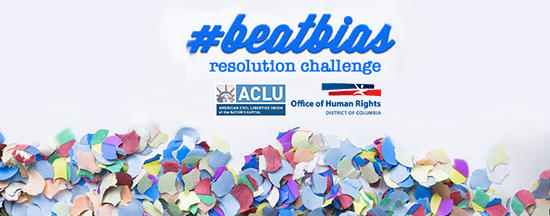
Visit the #BeatBias Resolution homepage to view all the steps released so far.
Step 3: #TBT: Remember the time when ____ people affected you?
We’ve talked about stereotypes and how our mind uses them as shortcuts to make judgments about people and situations, without us even realizing it. But where do these stereotypes come from? You weren’t born with these already in your mind, did ya?
The reality is stereotypes originate in thousands of ways. The information and biases given to us by the media, our family, our friends, and our coworkers all play an important role in how we view the world. Our personal experiences also shape our stereotypes. If we had a negative experience with someone of a particular race, sexual orientation, ethnicity, religion or other characteristic, we sometimes may use that experience with one person to shape our views of an entire group of people.
Today’s Action Item
- Think of a time you had a negative experience with someone who has different characteristics than you. For example: A Latina woman cut you off while driving on the freeway.
- Next, try to remember your initial reaction, and whether you made associations beyond what was appropriate given your knowledge of the negative experience. For example: Clearly, you are informed enough to determine this person was driving poorly today. But is it possible you made unfair comparisons, about Latinas or women and how they drive?
- Lastly, remembering your initial reaction, do you think it still influences how you view people with those characteristics, even if in a small way? If you don’t believe so, is it possible your unconscious-self makes this association?
Studies have shown that starting as toddlers, we begin to develop stereotypes and prejudice based on our experiences and the world and people around us. Once we have these stereotypes, removing them isn’t easy. Even if we see thousands of excellent Latina drivers, we may hold on to that stereotype based on a single incident. Throughout the day, we encourage you to think about other experiences you may have had that continue influencing you today.
Check back tomorrow at 10am for Step 4.


